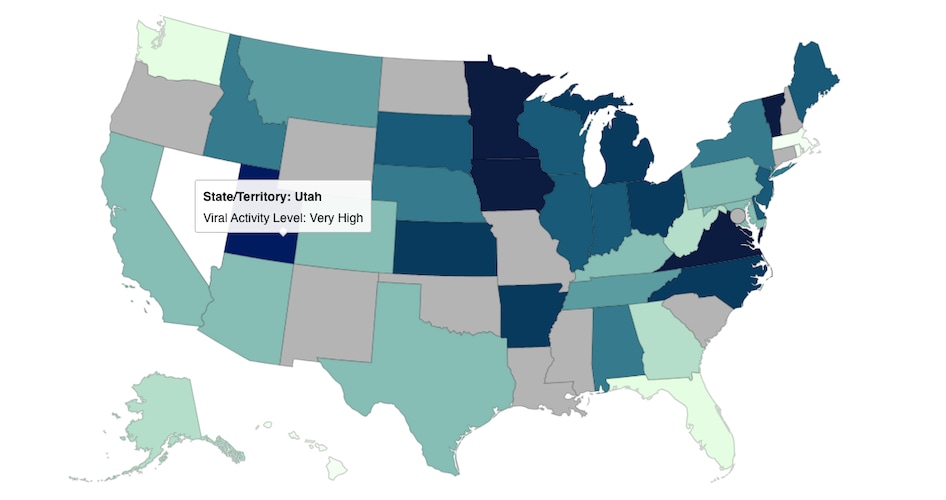The Centers for Disease Control and Prevention unveiled a new tool to track the spread of COVID-19 in the country’s wastewater, and the data doesn’t look good for Utah.
The Beehive State is one of 10 showing “very high” levels of coronavirus, according to the revamped dashboard. The other states include Kansas, Arkansas, Minnesota, Iowa, Michigan, Ohio, Vermont, Virginia and North Carolina.

(The Centers for Disease Control and Prevention) The CDC's new National Wastewater Surveillance System dashboard shows Utah has "very high" rates of COVID-19 in its wastewater.
Utah’s levels exceed both the national and regional rate. Analyzing trends in wastewater can show how the disease is circulating in a community, even when people aren’t showing symptoms, and can give an “early warning” if cases are mounting, according to the CDC.
State health officials said this week that coronavirus cases here are increasing. They expect cases and associated hospitalizations to continue rising through winter, according to the Department of Health and Human Services’ own revamped respiratory illnesses dashboard. Flu and RSV cases are also increasing.
State wastewater monitoring sites show 65.7% have elevated levels of COVID-19, and levels were increasing at 5.7% of sites.
“The best time to get an updated COVID-19 vaccine is now,” the department said, “to be better protected throughout the winter months.”
The CDC’s National Wastewater Surveillance System was created in September 2020, but these new charts improve on the “underwhelming” originals, CDC senior adviser Niall Brennan said on X, formerly Twitter.
“It was fun and fast paced,” he wrote, “and my thanks to the incredible team at CDC who willingly ripped up the rule book in the process of making this incredible resource more accessible to a wider audience.”
The CDC’s dashboard shows national, regional and state-level trends, as well how variants have changed over time. You can view it at: cdc.gov/nwss/rv/COVID19-nationaltrend.html.







